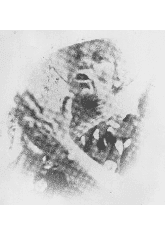
Ma Braun (NED)
Honor Coach (1967)
Ma Braun was born in 1881 and was Rotterdam Dutch all the way. About 1922, she saw a demonstration of the HDZ Dutch Ladies Swimming Club and had a typical Ma Braun reaction: “What they can do in Amsterdam, must we learn too in Rotterdam, and we must learn it better!” She had the same reaction when she saw the Americans dominate the 1924 Olympic Games in Paris. Soon everybody was watching Ma Braun, her World and Olympic champions, but Ma Braun continued to watch others and use whatever she saw. In 1947 at the age of 66, she went to Monaco to watch France’s great Alex Jany and Hungary’s Mitro; and at 70, she was in Luik, Belgium to learn what she could from the great Hungarian training school of the 1951 era. She was a progressive, constantly experimenting with stroke and tough new training methods. Her swimmers won Olympic medals in 1928, 1932, 1936, 1948 and 1952.
Ma Braun had many winners but it was always a challenge for the spectators whether to watch the race or Ma, one of the most volatile and colorful coaches, certainly the first great woman coach of world class women swimmers. She was an explosive personality of great temperament and sympathy who coached many of the Dutch national teams that dominated world women’s swimming in the 1930s and 1940s.

Mrs. Braun-Voorwinde’s first great pupil was Marie Baron, followed by Willie den Ouden, “Rie” Mastenbroek, her daughter Marie “Sis” Braun, Puck Oversloot, Doortje Heeselaars and after the Second World War, Ria v.d. Horst, Irma Schuhmacher, Doortje de Leeuw, Jopie van Alphen and Els Steehouwer.
In the 1928 Games, her daughter “Sis” won the 100 meter backstroke — and was second to Hall of Famer Martha Norelius in the 400 meter freestyle. Perhaps Ma Braun’s greatest swimmer was Hendrika Mastenbroek, the first and only girl to win both the 100 meter freestyle and 400 meter freestyle at an Olympics. She also anchored the winning Dutch freestyle relay in the 1936 Berlin Olympics for her third gold medal. Just as with Ma’s own “Sis” Braun, Mastenbroek held backstroke world records as well as crawl.
Beginning with Ma Braun’s girls and continuing with Jan Stender, the Netherlands was a dominant power in women’s swimming for 30 years. Only tiny Denmark, Holland’s neighbor, Hungary, and the U.S. were contenders in women’s swimming until the Australians came up in 1956. Ironically, it was the Dutch who were supposed to win in 1956, with Hungary second. Perhaps out of friendship born in swimming pools, the Dutch refused to enter the Melbourne Olympics as a protest to Free World inaction in the Hungarian Revolution. Ma Braun was gone, but Holland had 8 world record holders living on one street in Hilversum, and hoped to win the Women’s Olympic swim crown back from Hungary when the Revolution came.
